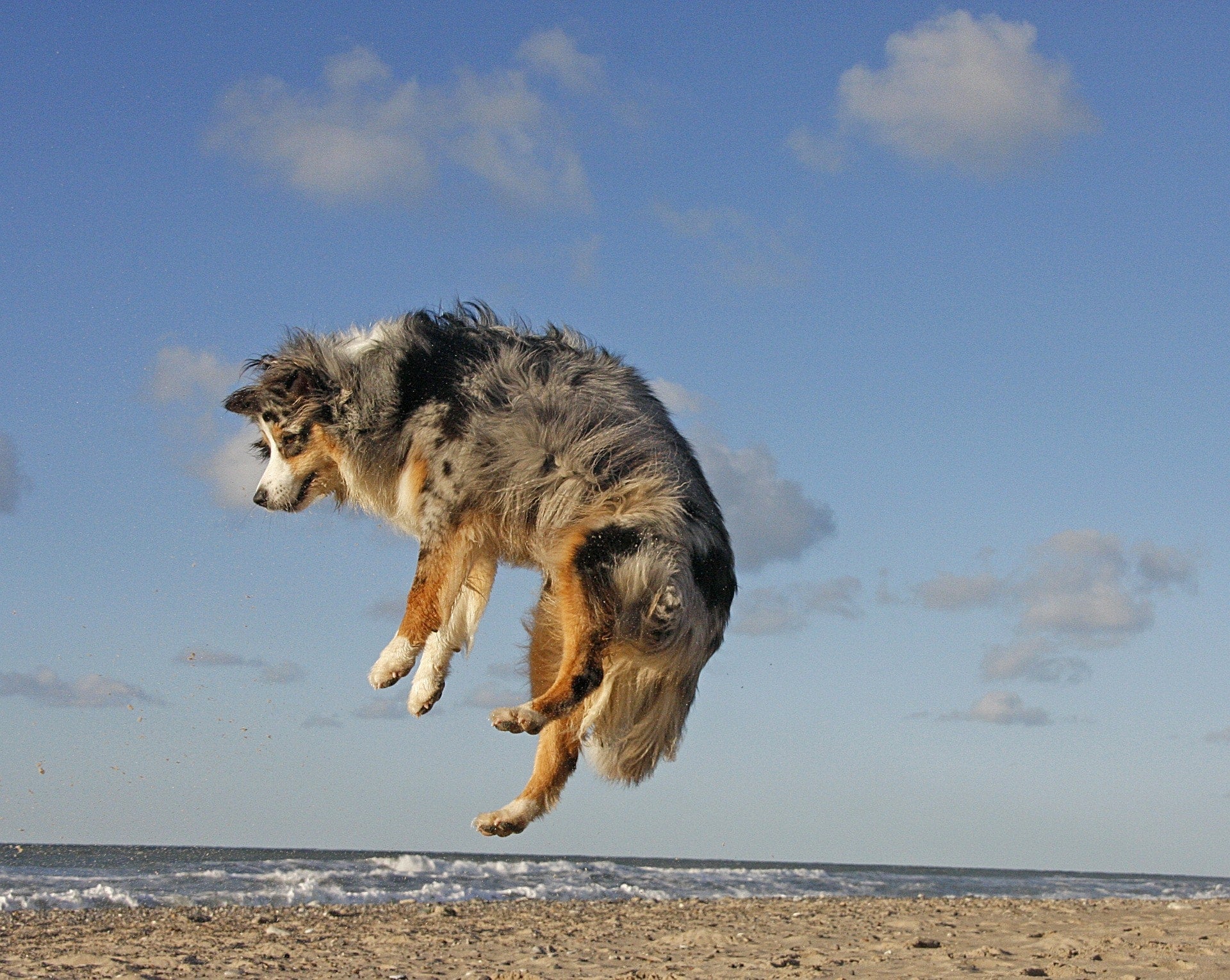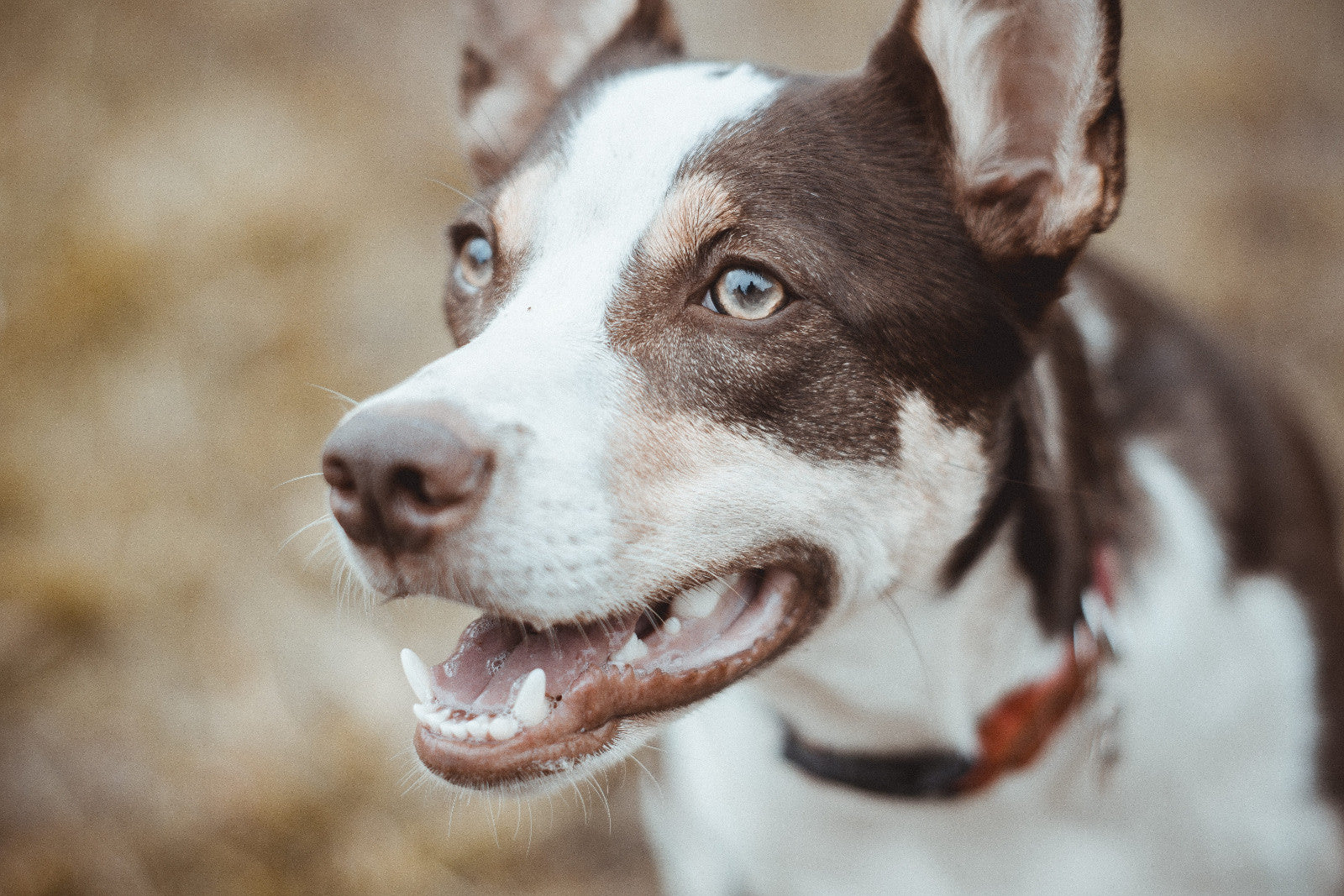Sharing our lives with dogs is a great privilege. They're loving companions to many of us, enriching our lives with their loyalty, affection, and exuberance.
There are 339 recognized dog breeds in the world, from the mighty Great Dane, to the diminutive Chihuahua. With such a variety of dogs on the planet, their physical characteristics and temperaments can vary widely. From the short-nosed, mischievous Pug, to the gentle, slender Whippet.
As well as the differences between breeds of dog, each individual has its own unique character and patterns of behavior. If you're a dog owner, we're sure you can attest to that!
But despite the differences between our furry friends, they share many behaviors that unite them. In today's post, we'll look at 3 common dog behaviors - and explain some of the reasons behind them.
So, if you've ever found your dog's behavior annoying, embarrassing, or just downright bizarre, this post may just provide some answers!

1) Humping
Humping is a common behavior in both male and female dogs, but it can definitely be a source of amusement or embarrassment for their owners!
Has your dog ever humped your leg, a toy, a pillow, another dog, or even a younger member of your family? If so, you're not alone.
So why do dogs hump? Let's have a look at some of the reasons:
Sexual
The most obvious reason dogs hump is as a sexual behavior. This applies to both male and female dogs, and even those who've been spayed or neutered. The simple fact is that dogs enjoy the stimulation they get from humping. And that's one of the reasons the behavior can become habitual.
Excitement
Humping can be a sign of overexcitement during play, rather than an overtly sexual behavior. Some dogs will mount and hump as a response to this excitement. This can happen when playing with other dogs, with members of the family, or simply with toys and inanimate objects.
Social
Humping can also be a way for dogs to exert power and control. You may have noticed that your dog always seems to single out a particular animal or member of the family to hump. If that's the case, it's likely that he's trying to signal his dominance in the social hierarchy.
Stress and Anxiety
Humping can be a coping mechanism for stress and anxiety. When your dog experiences these negative emotions he may start humping to calm his emotions. Common causes of stress and anxiety include fear of being left alone, loud noises, and social situations involving unfamiliar humans or animals.
2) Licking
Does your dog greet you and other members of your family with a slobbery tongue? Licking is another common behavior shared by many of our canine companions, and there are actually several explanations for it.
Here are some of the reasons dogs lick:
Affection
Most dog owners interpret licking as a sign of affection, and this can often be the case. Licking releases endorphins in the brain that relax and calm your dog. It also helps them bond with, and feel closer to those they care for.
Attention
Have you ever noticed that your dog starts licking you when your attention is focused on another pet or a family member? Dogs often lick when they're feeling neglected - it's a signal to you that they demand your attention!
Communication
Dogs have a limited range of ways to communicate with you, and they'll resort to those guaranteed to get your attention. Licking can be a way for your dog to tell you that he wants something from you. That's right, he may be trying to send you a message! Of course, it can be tricky to interpret his sloppy message, but lots of dogs lick because they're hungry, thirsty, or want you to take them outside.
Taste
Many dogs lick their owners simply because they like the taste! This can be due to salts on our skin that are released when we sweat, tiny particles of food (especially true if your dog licks your face), even lotions or creams on the body.
3) Chewing Paws
Have you ever noticed your dog chewing his paws? If so, you may be puzzled at the reasons why. Here are some of the most common explanations:
Allergies
If your dog chews his paws during the summer months, it could be a sign that he's suffering from seasonal allergies. Your dog can also develop reactions to allergens such as mold, food ingredients, and household chemicals. If you suspect that allergies are responsible for your dog's paw chewing, try massaging CocoTherapy therapeutic coconut oil into the pads of his paws. The lauric acid content in coconut oil contains anti-fungal, anti-bacterial, anti-virus, and anti-yeast properties that can clear up allergic reactions, fast.
Injuries
Injuries to the paws are a common reason for paw chewing. Typical injuries include cuts, insect bites, puncture wounds, and foreign objects lodged in the paw pads or between the toes. If your dog suddenly starts chewing his paws, inspect the paw pads carefully for signs of injury.
Behavioral Problems
If your dog is compulsively chewing his paws, it could be a sign that he's feeling depressed, anxious, or bored. Dogs need mental and physical stimulation. Behavioral problems such as paw chewing can often be addressed with environmental enrichment. A trained animal behaviorist can recommend activities to reduce or eliminate the behavior.
Dry Skin
Paw chewing during the winter months can indicate dry skin as the underlying issue. Low moisture levels in the air can cause your dog's skin to become dry and irritated, leading them to chew their paws in an effort to relieve the irritation. Dry skin can also be a sign of a lack of fatty acids in your dog's diet. Therapeutic coconut oil is a medium-chain fatty acid that can be introduced to your dog's diet to help eliminate dry skin and paw chewing.
Wrapping Up
We hope you've enjoyed today's post, and have learned a thing or two about your dog's behavior. The behaviors we've discussed in this post are generally harmless, but take care to monitor your dog for behavior that starts suddenly or becomes compulsive in nature. If this is the case, it's always worth consulting a trained veterinarian who can advise you and suggest ways to combat harmful behavior patterns.
By Richard Rowlands



